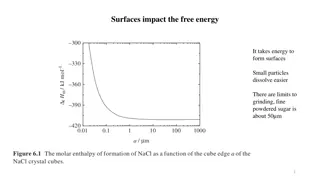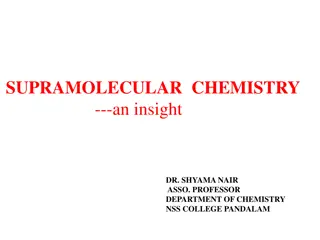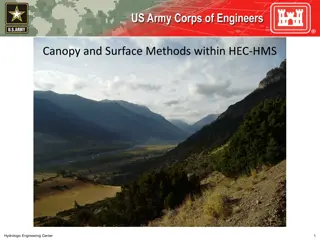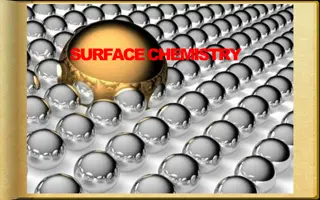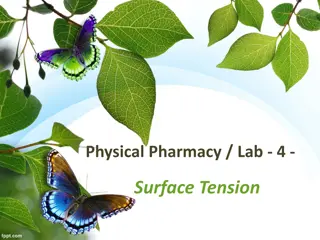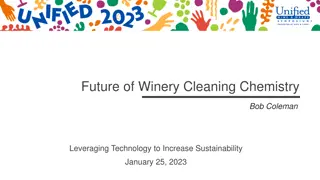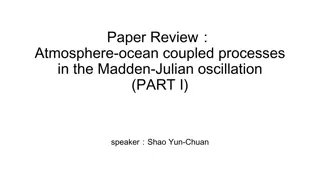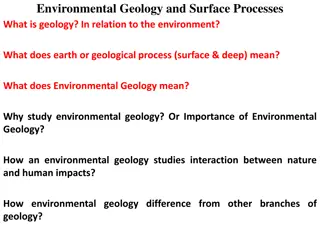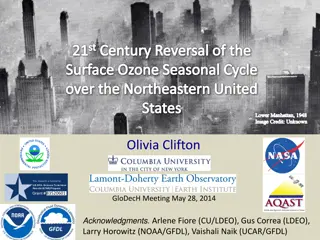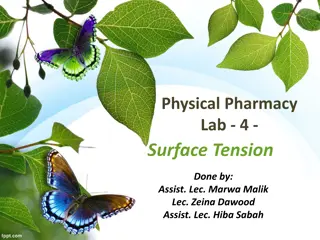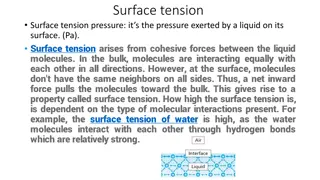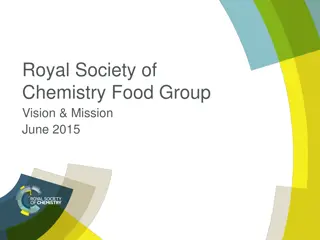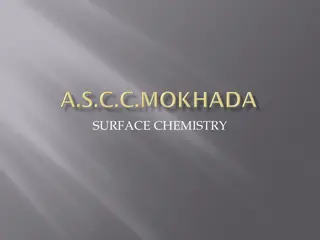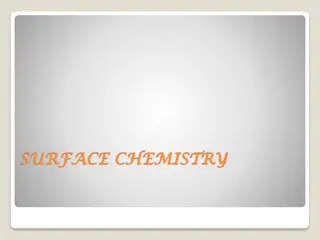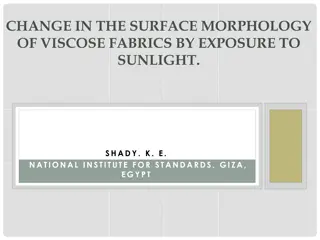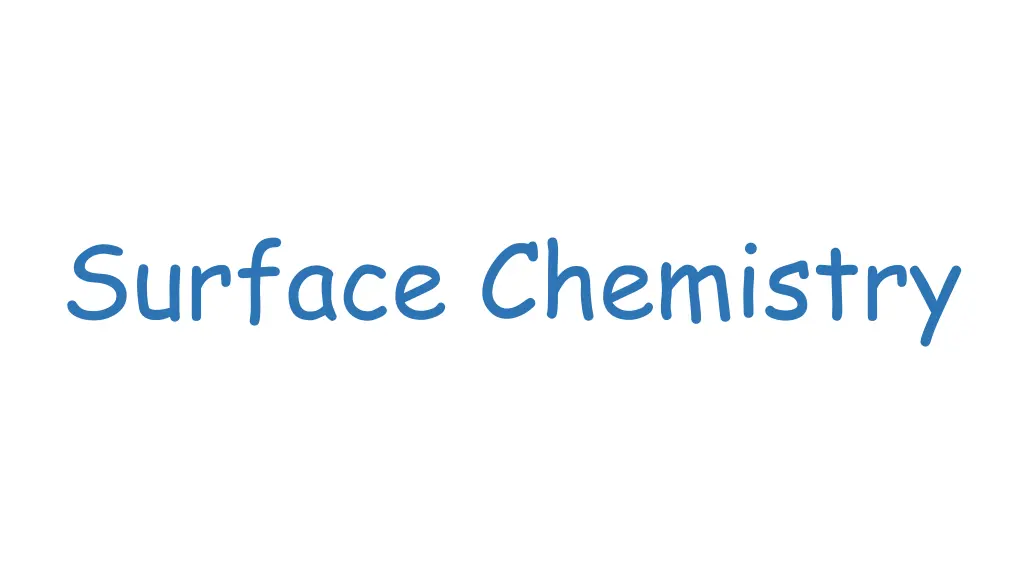
Understanding Surface Chemistry Fundamentals
Explore the fundamentals of surface chemistry, a branch of chemistry that focuses on the properties of surfaces and chemical changes at interfaces. Learn about True Solutions, Colloidal Solutions, Colloids, and the distinction between Crystalloids and Colloids. Discover how substances behave differently in various solvents and how colloid solutions can be converted into crystalloids and vice versa.
Download Presentation

Please find below an Image/Link to download the presentation.
The content on the website is provided AS IS for your information and personal use only. It may not be sold, licensed, or shared on other websites without obtaining consent from the author. If you encounter any issues during the download, it is possible that the publisher has removed the file from their server.
You are allowed to download the files provided on this website for personal or commercial use, subject to the condition that they are used lawfully. All files are the property of their respective owners.
The content on the website is provided AS IS for your information and personal use only. It may not be sold, licensed, or shared on other websites without obtaining consent from the author.
E N D
Presentation Transcript
A branch of chemistry that deals with the properties of surfaces or phase boundaries and with the chemical changes occurring at a surface or interface.
Introduction Thomas Graham (1861) noticed that the solution of glue, starch etc. were different in behaviour as compared to the solution of sodium chloride, sugar etc.
The solution of NaCl, sugar, etc. can pass through parchment membrane and are called True solutions. The substances forming true solutions are termed Crystalloids.
The solution of glue, starch, etc. cannot pass through the parchment membrane and are called Colloidal solutions or Sols.
The substances forming colloidal solutions are called Colloids. This difference in behaviour of true solutions and colloidal solutions is quite useful in separating colloids from crystalloids.
The difference in the diffusion through a parchment membrane can only be explained by assuming that 'colloids' in the dissolved state form bigger particles which cannot pass through small pores of the parchment membrane.
On the other hand, crystalloids are broken down in solution to form ions which can diffuse quickly. It is interesting to note that the particle size of the same substance may be different in different solvents.
For example, NaCl is a crystalloid when dissolved in water but forms colloidal solution in benzene. Similarly, soap forms a colloidal solution in water but acts as a crystalloid in alcohol. In general, a colloid can be converted into crystalloid and vice versa.
Colloidal State-an Intermediate State A colloidal state of a substance can be regarded as an intermediate state between a true solution and a suspension.
1. True solution When a soluble substance like NaCl, sugar etc. is dissolved in water, it forms a homogeneous solution in which molecules,ions are uniformly dispersed in water.
Such solutions are called true solutions. These are the solutions in which the molecules or ions of solute are uniformly distributed in the entire mass of the solvent.
The molecules or ions of the true solutions cannot be seen with naked eye or with a powerful microscope. The particle size of the true solution is less than 1 mu.
Such solutions can pass through the filter paper as well as through a parchment membrane.
2. Suspensions When an insoluble substance such as calcium carbonate is shaken with enough water, a heterogeneous mixture results. The particles of calcium carbonate are seen in the solvent.
The dispersion of an insoluble substance in a solvent is called suspension. The particle size of suspension is greater than 10 u. These particles can be seen with a naked eye and cannot pass through an ordinary filter paper.
3. Colloidal solution When a soluble substance such as gum is dissolved in water, then a heterogeneous solution results. The particle size in this case is found to be greater than that of solute molecules in true solution and smaller than that of suspensions.
Such a solution is colloidal solution and its particle size is inbetween 1 mu - 0.1 u. The size of the colloidal particles is less than the wavelength of visible light (380-760 mu). Thus, these particles cannot be seen with a naked eye or through an ordinary microscope.

